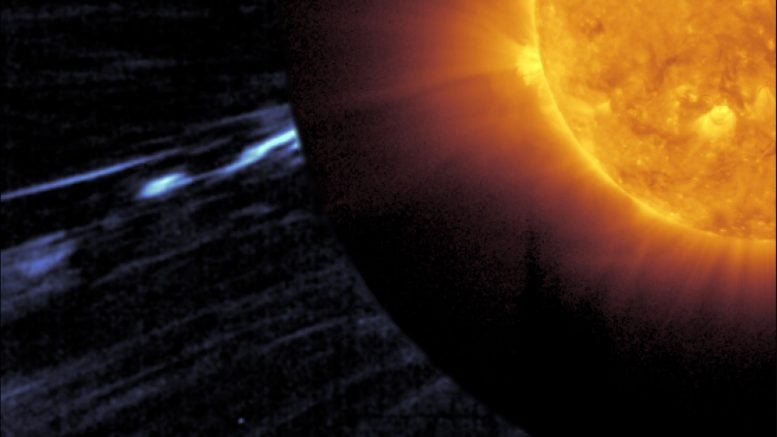
A magnetic phenomenon known as solar switchbacks has been imaged by the ESA/NASA Solar Orbiter spacecraft for the first time. The image zooms in on the switchback (blue/white feature extending towards the left) as captured in the solar corona by the Metis instrument on March 25, 2022. The switchback appears to be linked to the active region seen in the central Extreme Ultraviolet Imager image (right). Credit: ESA & NASA/Solar Orbiter/EUI & Metis Teams and D. Telloni et al. (2022)
With fresh data from its closest pass of the Sun thus far, the ESA/NASA Solar Orbiter spacecraft has found compelling clues as to the origin of solar magnetic switchbacks. The discovery points toward how their physical formation mechanism might help accelerate the solar wind.
Solar Orbiter has made the first-ever remote sensing observation consistent with a magnetic phenomenon called a solar switchback – sudden and large deflections of the solar wind’s magnetic field. The new observation provides a full view of the structure, confirming it has an S-shaped character, as predicted. Moreover, the global perspective provided by the Solar Orbiter data indicates that these rapidly changing magnetic fields can have their origin near the surface of the Sun.
A close-up view of the Solar Orbiter Metis data turned into a movie shows the evolution of the switchback. The sequence represents around 33 minutes of data taken on March 25, 2022. The bright structure forms while propagating outwards from the Sun. As it reaches its full development it bends back on itself and acquires the distorted S-shape characteristic of a magnetic switchback. The structure expands at a speed of 80 km/s but the whole structure does not move at this speed. Instead, it stretches and distorts. This is the first time a magnetic switchback has ever been observed remotely. All other detections have taken place when spacecraft have flown through these disturbed magnetic regions. Credit: ESA & NASA/Solar Orbiter/Metis Teams; D. Telloni et al. (2022)
Although a number of spacecraft have flown through these puzzling regions before, in situ data only allow for a measurement at a single point and time. As a consequence, the structure and shape of the switchback has to be inferred from plasma and magnetic field properties measured at just one point.
When the German-US Helios 1 and 2 spacecraft flew close to the Sun in the mid-1970s, both probes recorded sudden reversals of the Sun’s magnetic field. These mysterious reversals were always abrupt and always temporary. They only lasted from a few seconds to a number of hours before the magnetic field switched back to its original direction.
These magnetic structures were also probed at much larger distances from the Sun by the Ulysses spacecraft in the late 1990s. Instead of a third of the Earth’s orbital radius from the Sun, where the Helios missions made their closest pass, Ulysses operated mostly beyond the Earth’s orbit.
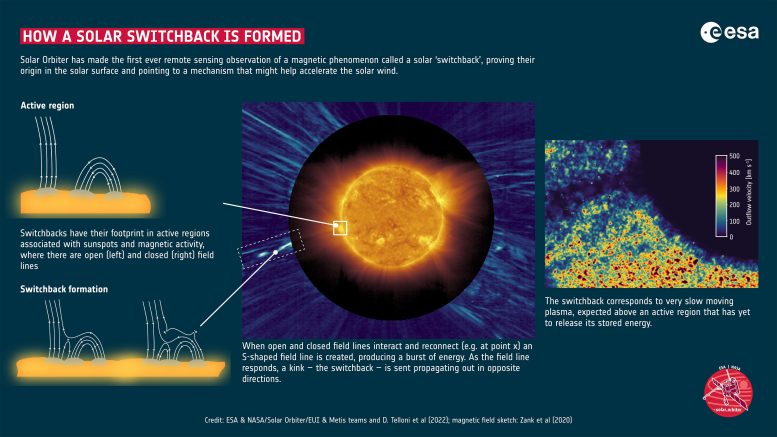
How a solar switchback is formed infographic. Solar Orbiter has made the first ever remote sensing observation of a magnetic phenomenon called a solar ‘switchback’, proving their origin in the solar surface and pointing to a mechanism that might help accelerate the solar wind. Credit: ESA & NASA/Solar Orbiter/EUI & Metis Teams and D. Telloni et al. (2022); Zank et al. (2020)
Their number rose dramatically with the arrival of NASA’s Parker Solar Probe in 2018. This clearly indicated that the sudden magnetic field reversals are more numerous close to the Sun, and led to the suggestion that they were caused by S-shaped kinks in the magnetic field. This puzzling behavior earned the phenomenon the name of switchbacks. A number of ideas were proposed as to how these might form.
On March 25, 2022, Solar Orbiter was just a day away from a close pass of the Sun – bringing it within the orbit of planet Mercury – and its Metis instrument was taking data. Metis blocks out the bright glare of light from the Sun’s surface and takes pictures of the Sun’s outer atmosphere, known as the corona. The particles in the corona are electrically charged and follow the Sun’s magnetic field lines out into space. The electrically charged particles themselves are called a plasma.
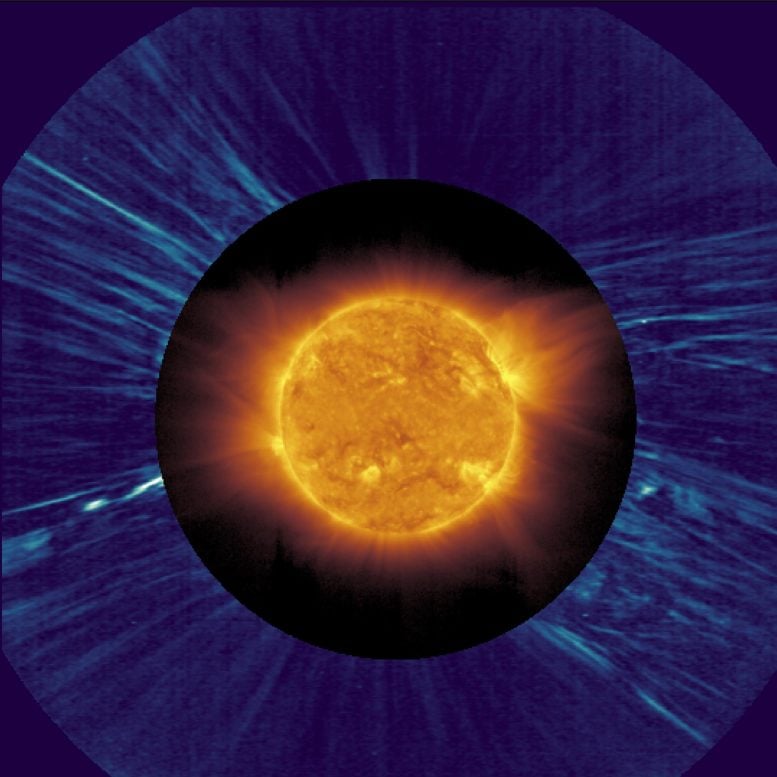
The Sun as seen by the ESA/NASA Solar Orbiter spacecraft on March 25, 2022, one day before its closest approach of about 0.32 au, which brought it inside the orbit of planet Mercury. The central image was taken by the Extreme Ultraviolet Imager (EUI) instrument. The outer image was taken by the coronagraph Metis, an instrument that blocks out the bright light of the Sun’s surface in order to see the Sun’s faint outer atmosphere, known as the corona. The Metis image has been processed to bring out structures in the corona. This revealed the switchback (the prominent white/light blue feature at the roughly 8 o’clock position in the lower left). It appears to trace back to the active region on the surface of the Sun, where loops of magnetism have broken through the Sun’s surface. Credit: ESA & NASA/Solar Orbiter/EUI & Metis Teams and D. Telloni et al. (2022)
At around 20:39 UT, Metis recorded an image of the solar corona that showed a distorted S-shaped kink in the coronal plasma. To Daniele Telloni, National Institute for Astrophysics – Astrophysical Observatory of Torino, Italy, it looked suspiciously like a solar switchback.
Comparing the Metis image, which had been taken in visible light, with a concurrent image taken by Solar Orbiter’s Extreme Ultraviolet Imager (EUI) instrument, he saw that the candidate switchback was taking place above an active region cataloged as AR 12972. Active regions are associated with sunspots and magnetic activity. Further analysis of the Metis data showed that the speed of the plasma above this region was very slow, as would be expected from an active region that has yet to release its stored energy.
Daniele instantly thought this resembled a generating mechanism for the switchbacks proposed by Prof. Gary Zank, from the University of Alabama in Huntsville, USA. The theory looked at the way different magnetic regions near the surface of the Sun interact with each other.
ESA’s Solar Orbiter has solved the mystery of a magnetic phenomenon in the solar wind. It has taken the first-ever image of a ‘switchback’ in the solar corona, confirming its predicted ‘S’ shape. A switchback is defined by rapid flips in the magnetic field direction. The observed switchback is linked to an active region associated with sunspots and magnetic activity where there is an interaction between open and closed magnetic field lines. The interaction releases energy and sends the S-shaped disturbance into space. The new data suggest that switchbacks could originate near the solar surface, and may be important in understanding the acceleration and heating of the solar wind. Credit: ESA
Close to the Sun, and especially above active regions, there are open and closed magnetic field lines. The closed lines are loops of magnetism that arch up into the solar atmosphere before curving round and disappearing back into the Sun. Very little plasma can escape into space above these field lines and so the speed of the solar wind tends to be slow here. Open field lines are the reverse, they emanate from the Sun and connect with the interplanetary magnetic field of the Solar System. They are magnetic highways along which the plasma can flow freely, and give rise to the fast solar wind.
Daniele and Gary proved that switchbacks occur when there is an interaction between a region of open field lines and a region of closed field lines. As the field lines crowd together, they can reconnect into more stable configurations. Rather like cracking a whip, this releases energy and sets an S-shaped disturbance traveling off into space, which a passing spacecraft would record as a switchback.

Metis observation of the switchback is consistent with the sound theoretical mechanism for the production of solar magnetic switchbacks proposed in 2020 by Prof. Gary Zank. The key observation was that the switchback could be seen emanated from above a solar active region. This sequence shows the chain of events that the researchers think is taking place. (a) Active regions on the Sun can feature open and closed magnetic field lines. The closed lines arch up into the solar atmosphere before curving round back into the Sun. The open field lines connect with the interplanetary magnetic field of the Solar System. (b) When an open magnetic region interacts with a closed region, the magnetic field lines can reconnect, creating an approximately S-shape field line and producing a burst of energy. (c) As the field line responds to the reconnection and the release of energy, a kink is set propagating outwards. This is the switchback. A similar switchback is also sent in the opposite direction, down the field line, and into the Sun. Credit: Zank et al. (2020)
According to Gary Zank, who proposed one of the theories for the origin of switchbacks, “The first image from Metis that Daniele showed suggested to me almost immediately the cartoons that we had drawn (see image above) in developing the mathematical model for a switchback. Of course, the first image was just a snapshot and we had to temper our enthusiasm until we had used the excellent Metis coverage to extract temporal information and do a more detailed spectral analysis of the images themselves. The results proved to be absolutely spectacular!”
Together with a team of other researchers, they built a computer model of the behavior, and found that their results bore a striking resemblance to the Metis image, especially after they included calculations for how the structure would elongate during its propagation outwards through the solar corona.
“I would say that this first image of a magnetic switchback in the solar corona has revealed the mystery of their origin,” says Daniele, whose results are published in a paper in The Astrophysical Journal Letters.
In understanding switchbacks, solar physicists may also be taking a step toward understanding the details of how the solar wind is accelerated and heated away from the Sun. This is because when spacecraft fly through switchbacks, they often register a localized acceleration of the solar wind.
“The next step is to try to statistically link switchbacks observed in situ with their source regions on the Sun,” says Daniele. In other words, to have a spacecraft fly through the magnetic reversal and be able to see what’s happened on the solar surface. This is exactly the kind of linkage science that Solar Orbiter was designed to do, but it does not necessarily mean that Solar Orbiter needs to fly through the switchback. It could be another spacecraft, such as Parker Solar Probe. As long as the in-situ data and remote sensing data is concurrent, Daniele can perform the correlation.
“This is exactly the kind of result we were hoping for with Solar Orbiter,” says Daniel Müller, ESA Project Scientist for Solar Orbiter. “With every orbit, we obtain more data from our suite of ten instruments. Based on results like this one, we will fine-tune the observations planned for Solar Orbiter’s next solar encounter to understand the way in which the Sun connects to the wider magnetic environment of the Solar System. This was Solar Orbiter’s very first close pass to the Sun, so we expect many more exciting results to come.”
Solar Orbiter’s next close pass of the Sun – again within the orbit of Mercury at a distance of 0.29 times the Earth-Sun distance – will take place on 13 October. Earlier this month, on 4 September, Solar Orbiter made a gravity assist flyby at Venus to adjust its orbit around the Sun; subsequent Venus flybys will start raising the inclination of the spacecraft’s orbit to access higher latitude – more polar – regions of the Sun.
Reference: “Observation of a Magnetic Switchback in the Solar Corona” by Daniele Telloni, Gary P. Zank, Marco Stangalini, Cooper Downs, Haoming Liang, Masaru Nakanotani, Vincenzo Andretta, Ester Antonucci, Luca Sorriso-Valvo, Laxman Adhikari, Lingling Zhao, Raffaele Marino, Roberto Susino, Catia Grimani, Michele Fabi, Raffaella D’Amicis, Denise Perrone, Roberto Bruno, Francesco Carbone, Salvatore Mancuso, Marco Romoli, Vania Da Deppo, Silvano Fineschi, Petr Heinzel, John D. Moses, Giampiero Naletto, Gianalfredo Nicolini, Daniele Spadaro, Luca Teriaca, Federica Frassati, Giovanna Jerse, Federico Landini, Maurizio Pancrazzi, Giuliana Russano, Clementina Sasso, Ruggero Biondo, Aleksandr Burtovoi, Giuseppe E. Capuano, Chiara Casini, Marta Casti, Paolo Chioetto, Yara De Leo, Marina Giarrusso, Alessandro Liberatore, David Berghmans, Frédéric Auchère, Regina Aznar Cuadrado, Lakshmi P. Chitta, Louise Harra, Emil Kraaikamp, David M. Long, Sudip Mandal, Susanna Parenti, Gabriel Pelouze, Hardi Peter, Luciano Rodriguez, Udo Schühle, Conrad Schwanitz, Phil J. Smith, Cis Verbeeck and Andrei N. Zhukov, 12 Septmeber 2022, The Astrophysical Journal Letters.
DOI: 10.3847/2041-8213/ac8104

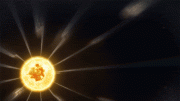
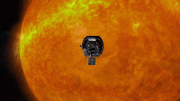
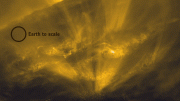
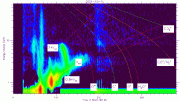
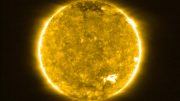
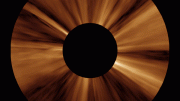
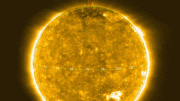
Our Sun is nothing less than a light bulb that is using the elements it has created on its surface as the resistance to create the light. When the sun was first created, it gave off no optical light because there was no resistance. It was pure gamma rays.
The center of our Sun is not fusion but what’s called quark plasma. This plasma uses the matter space is made of, which causes the force of gravity, as the limitless catalyst that the most efficient reaction in the universe should possess. Once quarks have been separated from a sufficient enough reaction, it is the sheer density and pressure of space that is able to overcome the strong force between the quarks and space to keep the quarks apart indefinitely. I believe the field that keeps the reaction going is an extremely pressurized, absolute zero field of sterile electron neutrinos. This field is the true energy of the universe. All the energy we know of, including gravity, manipulates this field but it all loses to space in the end. That is the true point of absolute zero and the second law of thermodynamics.
Our Sun took the quarks and neutrinos and began fusing them on the surface. This created the first neutrons, and optically visible light, the sun had ever shined. These are the “ring stars” scientists have witnessed. Once enough neutrons have congregated on the surface, they begin to break down to the first hydrogen. At that point, the constantly forming neutrons fuse with the hydrogen to create the first helium using the beta minus decay reaction. This is the only, true fusion this universe utilizes. The beta minus decay continues creating heavier elements making the star darker until a surface forms and the light is extinguished. That is when the atmosphere, including all the water, is allowed to develop. Our universe essentially turned itself into a giant catalytic converter for probably what was a billion years or more.
Our Sun has created an incredible amount of elements on its surface including iron. Sunspots are at a temperature where iron is a liquid. Everything on the surface is getting bombarded by the gamma rays from the quark plasma core. Whatever blocks this radiation is going to wreak havoc as the energy tries to go around what is blocking it. This causes explosions of the gamma rays to radiate towards our planet. Everything on the surface of the Sun is fighting the outgoing gamma rays and, consequently, experiencing the gravity of the field of space as it uses its natural pressure to replace the energy that was expelled.
The “Big Bang” was simply our universe turning itself into a gargantuan particle collider that created quark plasma shrapnel that are the galaxies we see expanding to this day. They were all essentially created as single black holes. Since quark plasma can make shapes, each galaxy had its own size, shape, rotational rate, and trajectory. Ours was spinning and used centrifugal force to create what we see today.
The collision is where the energy came from, not gravity. The collision created the momentum for the galaxies to expand. It created an anisotropic expansion of matter that will appear to be an accelerating, expanding universe if it is assumed that the entire universe is expanding. This theory explains many problems that exist about the Sun.